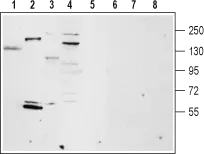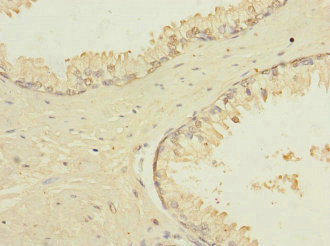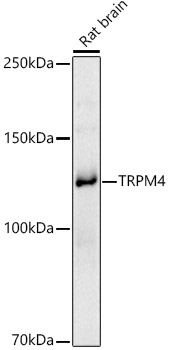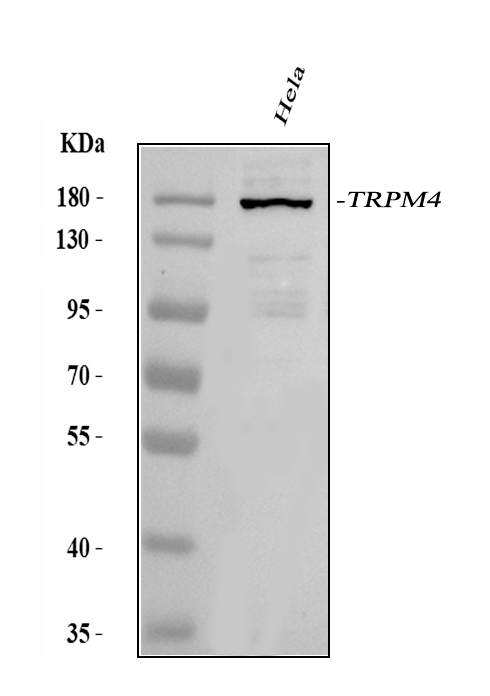
IHC-P analysis of rat lung tissue using GTX54863 TRPM4 antibody. TRPM4 is expressed in the respiratory epithelium of the bronchioli (arrows). Hematoxilin is used as the counterstain. Dilution : 1:100
TRPM4 antibody
GTX54863
ApplicationsImmunoFluorescence, Western Blot, ImmunoCytoChemistry, ImmunoHistoChemistry, ImmunoHistoChemistry Paraffin
Product group Antibodies
TargetTRPM4
Overview
- SupplierGeneTex
- Product NameTRPM4 antibody
- Delivery Days Customer7
- ApplicationsImmunoFluorescence, Western Blot, ImmunoCytoChemistry, ImmunoHistoChemistry, ImmunoHistoChemistry Paraffin
- CertificationResearch Use Only
- ClonalityPolyclonal
- Concentration0.85 mg/ml
- ConjugateUnconjugated
- Gene ID54795
- Target nameTRPM4
- Target descriptiontransient receptor potential cation channel subfamily M member 4
- Target synonymsEKVP6, LTrpC4, PFHB1B, TRPM4B, hTRPM4, transient receptor potential cation channel subfamily M member 4, calcium-activated non-selective cation channel 1, long transient receptor potential channel 4, melastatin-4
- HostRabbit
- IsotypeIgG
- Protein IDQ8TD43
- Protein NameTransient receptor potential cation channel subfamily M member 4
- Scientific DescriptionThe protein encoded by this gene is a calcium-activated nonselective ion channel that mediates transport of monovalent cations across membranes, thereby depolarizing the membrane. The activity of the encoded protein increases with increasing intracellular calcium concentration, but this channel does not transport calcium. [provided by RefSeq, Mar 2016]
- Storage Instruction-20°C or -80°C,2°C to 8°C
- UNSPSC12352203









![IHC-P analysis of human liver carcinoma tissue using GTX83489 TRPM4 antibody [10H5]. Antigen retrieval : Heat-induced epitope retrieval by 10mM citrate buffer, pH6.0, 100oC for 10min.](https://www.genetex.com/upload/website/prouct_img/normal/GTX83489/GTX83489_1444_IHC-P_w_23061419_468.webp)
![WB analysis of various cell lines using GTX83490 TRPM4 antibody [3C4]. Loading : 35 ug per lane Dilution : 1:200](https://www.genetex.com/upload/website/prouct_img/normal/GTX83490/GTX83490_3420_WB_w_23061419_110.webp)